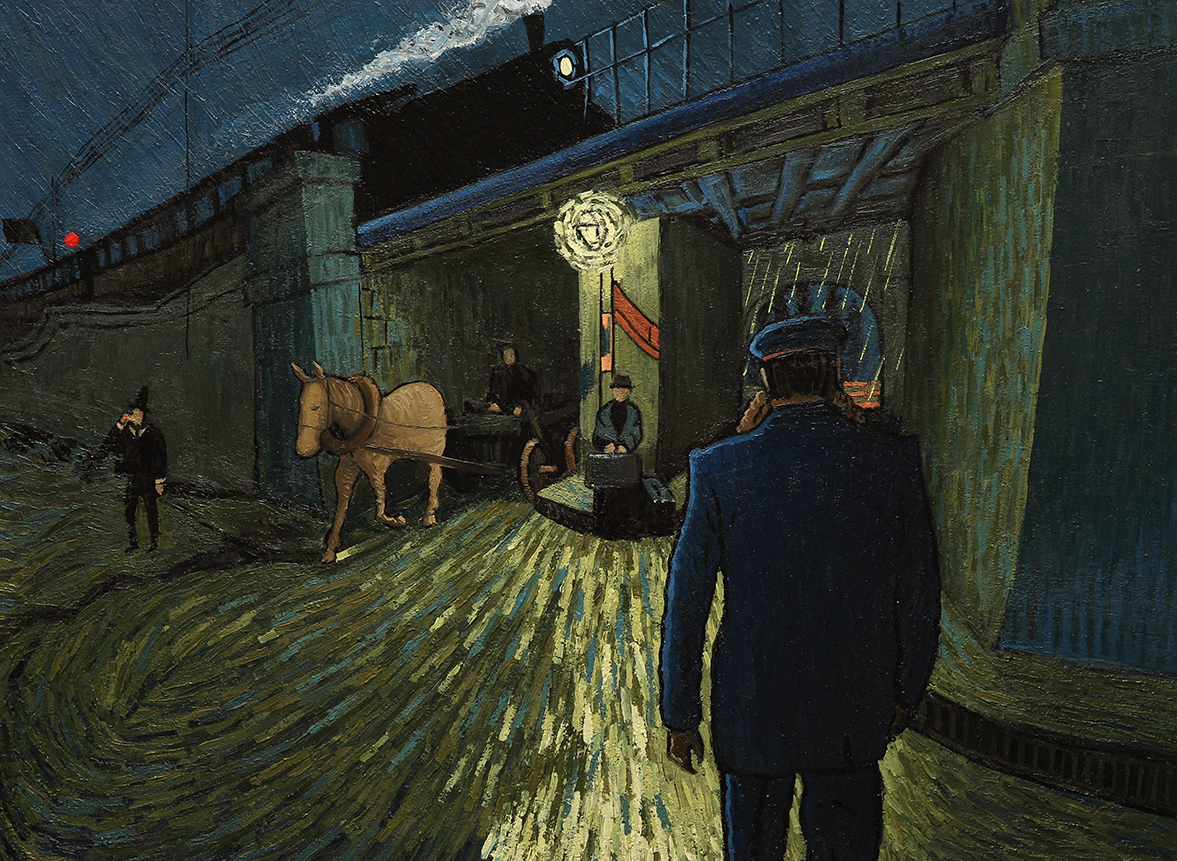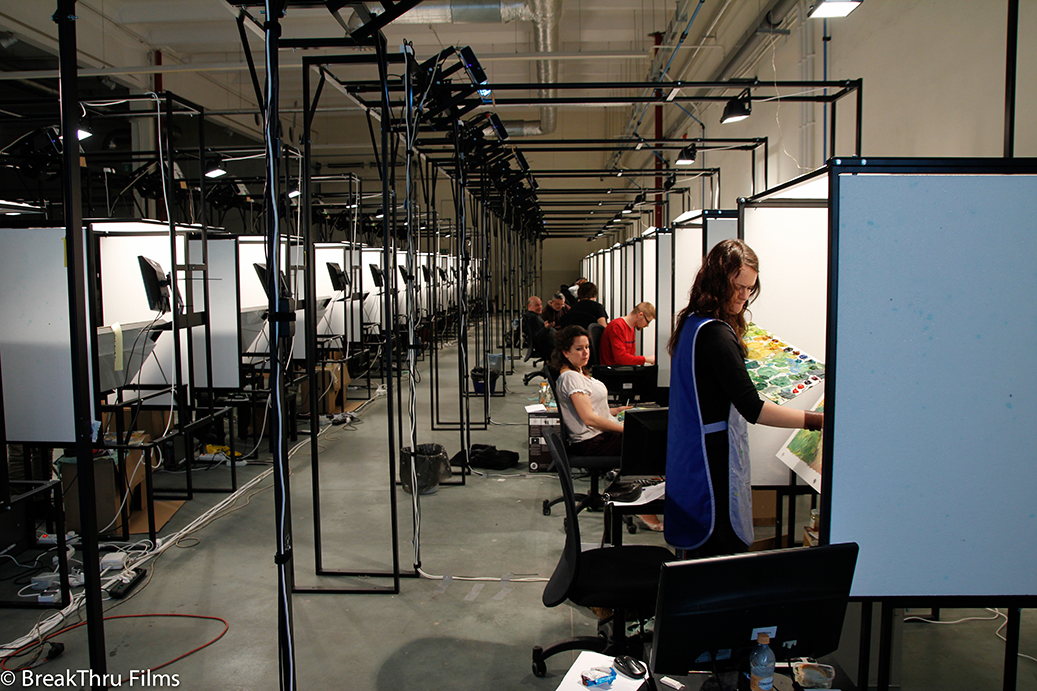The animated feature has recently enjoyed newfound accessibility to the independent animator. The opportunity to tell a longer story with one’s individual mark is facilitated by crowdfunding and digital technology, making the commercial animation studio no longer a necessity. However, this invitation to the auteur comes at a cost: the solo indie animator typically must choose between limited animation (Don Hertzfeldt, Signe Baumane) or decades of perseverance (Chris Sullivan, Sheila Sofian) to leave their unique stylistic mark on a feature length film.
Given this tenuous toehold, what is the next leap forward for feature animation but discovering the scalability of the artist’s hand and thus enabling the artistic mark to be mass produced? This is the idea behind Loving Vincent, a forthcoming feature-length documentary/drama on the final years of Van Gogh’s life. Every single frame of the film is hand-painted on canvas by a team of artists, making it the first mass-produced painted animation film.
What has enabled this momentous endeavor is the meticulous planning, research, and artistic orchestration from directorial team Dorota Kobiela (The Little Postman) and Hugh Welchman (Peter and the Wolf) from BreakThru Films in Poland. Van Gogh’s paintings provide the visual foundation for every scene in the film. A team of 55 painters were selected from over 600 applicants and taken through an intensive 6-week training session, learning how to manipulate wet paint under the camera while staying true to Van Gogh’s style. Now rows of the Painted Animation Workstations (PAWS) fill the studio in Gdańsk, Poland. The workflow has been streamlined to the ultimate level of efficiency so the painter can focus all of his or her energy on each brush stroke. Live-action reference footage of costumed actors is projected onto the canvas. While overall movement is pre-determined, the flow of each brushstroke is left to the talent of the individual painter.
Of course, the question is, will this method of upscaling one of animation most time-consuming and individual techniques be successful? On close inspection, an individual frame of the film, particularly those segments created from the actors’ performances, resemble, but do not replicate Van Gogh’s paintings. The brushwork is simplified to save time, the faces are more anatomically realistic than Van Gogh’s impressionistic distortion. But the aim of the film is more complex than to convincingly forge a moving painting. Van Gogh’s life is stitched together by those closest to him – the people whose portraits he painted. Gleaning a mysterious, inconclusive tale from extensive research into his personal letters, Welchman and Kobiela have revealed the broader, empathetic backstory that contextualizes the sensationalism of Van Gogh’s more notable mental lapses and his enigmatic death, right as his painting career was taking off.
The potential impact of this film is not in the hands of the 35 painters currently working on the 56,800 frames of the film, but in the ability of the directors to sift through what he has left, paintings and letters. If they reveal the world Van Gogh saw, and perhaps help us to a deeper understanding of his final days, it may be that Van Gogh himself will be the first auteur of a studio-produced animated feature.
Corrie Francis Parks animates sand, paint and other unusual materials. Working with one hand under the camera and the other on the computer keyboard, her animation maintains an organic connection to natural materials and traditional production methods while fully integrating digital technology. Assistant Professor of Animation at University of Maryland, Baltimore County, her newly published book, Fluid Frames: Experimental Animation with Sand, Clay, Paint and Pixels. (Focal Press, 2016) brings together traditional and digital workflow for under-the-camera animation.




1 comment for “Mass producing the hand of the artist”